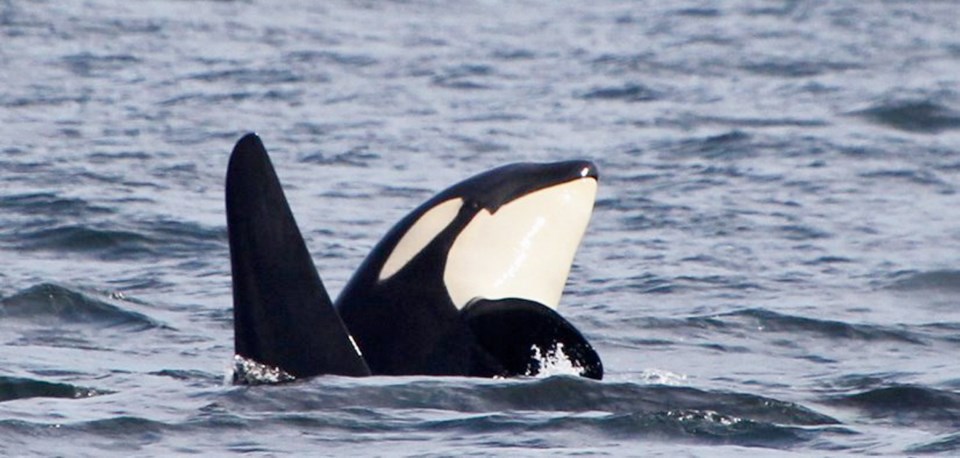A Seattle-based non-profit group wants to establish a whale-protection zone on the west side of San Juan Island to keep what it calls the “paparazzi” — whale-watching and private boats — from approaching the animals.
Orca Relief Citizens Alliance executive director Scott West said the purpose for the zone would be to help endangered southern resident killer whales recover. There’s a population of 78, far below the 200 or so before 1900, he said.
While there been fluctuation in the orca numbers “the trend is down, down, down, down,” West said.
He said a key reason for that is a shortage of chinook salmon, a primary food source for orcas.
“But we also think that there are other factors affecting them, including pollutants and the noise and harassment from vessels. We’re saying give the whales an area in their critical core habitat that they depend upon, give them an area free of this harassment so they can rest, they can more effectively hunt the few fish that are there, they can communicate, they can socialize and do all the things that they need to do.”
The proposed zone in Haro Strait is less than one-half of one per cent of the critical core habitat, West said, and runs from San Juan Island’s Cattle Point to Mitchell Point. “It works out to about 10 to 12 square miles. It extends three-quarters of a mile from the shore and then there’s an additional quarter-mile buffer zone.”
The idea of a protection zone in the area has been talked about for 15 years, said Michael Harris, former executive director of the Pacific Whale Watch Association, which represents 37 whale-watching companies in B.C. and Washington state. “It’s primarily going after whale-watch boats, commercial whale-watch boats.” But whale-watch boats are a “minuscule” part of the problem, Harris said.
“The biggest problem is recreational boaters, people who don’t do this commercially, don’t have experience operating around whales.”
He said commercial operators took a lead in establishing the government guidelines they must obey, which require boats to stay 200 yards from whales.
“It’s been a very progressive industry, largely because they know that without whales there is no whale watching.”
He said whale-watching companies realize there is a major focus on protecting whales. “The whale watchers want to show that they’re part of the solution, not part of the problem.”
Marine-protected areas such as what is being proposed do work, Harris said. “The question is:‘Is this where you put all your energy?’ ”
Harris said he has met with members of the Orca Relief Citizens Alliance on the issue of a protection zone and told them he does not consider it a bad idea. “It just needs to be fleshed out a bit more. We need to look at other areas that are feeding hotspots, that can do something, that can help.
“We have to look at conservation not by optics, but by efficacy.”
Comments on the proposed zone can be made until April 13 at regulations.gov/document?D-NOAA-NMFS-2016-0152-0001. The Orca Relief Citizens Alliance has started a petition seeking support for the zone at orcarelief.org.



